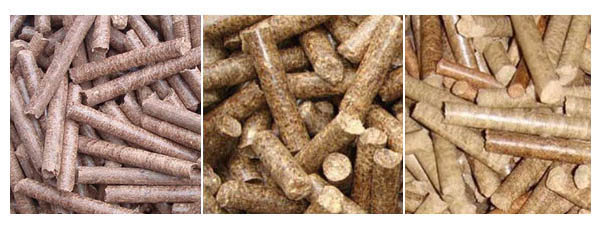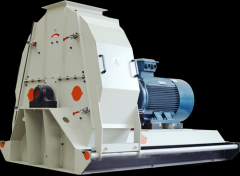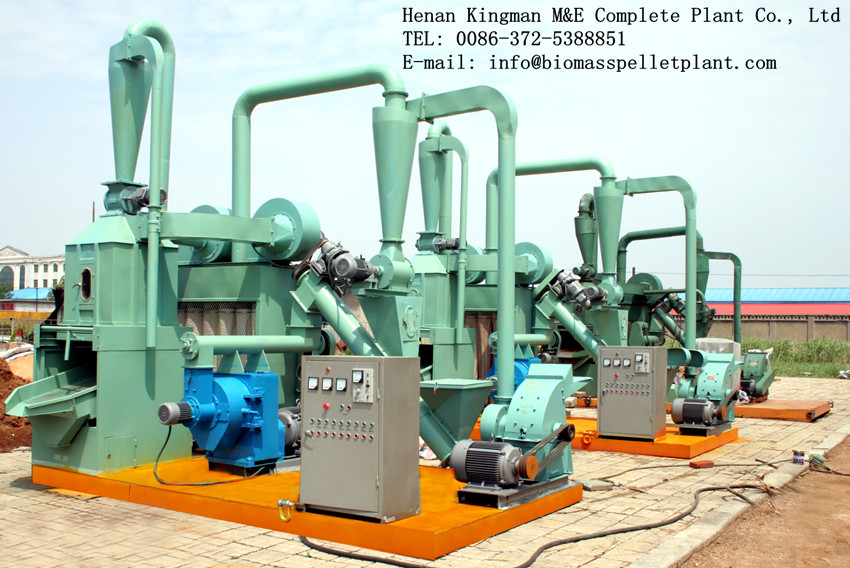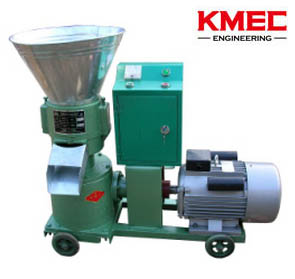Market Prediction and Potential Supply of Biomass Pellets
According to the statistics, biomass currently provides almost 10 percent of the world’s energy supply, two-thirds of which is used for cooking and heating in developing countries. However, in developed countries, biomass is often used as a replacement for fossil fuels. According to the International Energy Agency’s August 2014 Renewable Energy Market Report, global renewable generation will rise by 45 percent and is expected to make up nearly 26 percent of electricity generation by 2020. As an important form of biomass, biomass pellets made by pellet plant are now used widely around the world that promotes the development of pellet plant in return.
Several studies recently performed by renowned and acknowledged organizations have investigated the potential demand for wood pellets in the years to come. There is no denying that the increasing demands for pellets will also bring in good chances of pellet mill marketing. Existing analyses include forecasts by Ekman & Co., AEBIOM and NewEnergy Finance. All projections are based on Europe, but estimates are for different years. According to such estimates, EU demand could range between 20 and 50 million tons by 2020, depending to a large extent on:
Several studies recently performed by renowned and acknowledged organizations have investigated the potential demand for wood pellets in the years to come. There is no denying that the increasing demands for pellets will also bring in good chances of pellet mill marketing. Existing analyses include forecasts by Ekman & Co., AEBIOM and NewEnergy Finance. All projections are based on Europe, but estimates are for different years. According to such estimates, EU demand could range between 20 and 50 million tons by 2020, depending to a large extent on:
1. the policies on co‐firing in a.o. the UK, Netherlands, Belgium, Germany, Poland, as well as the combination of market dynamics for coal plus CO2 emission allowances;
2. the continuity of support measures for the uptake of the market for pellet stoves and boilers, as well as the price of fossil fuels for heating and the related attractiveness to switch to wood pellets for small‐scale users (households and medium‐sized residential buildings). By extrapolating the demand exponentially, based on current consumption levels as they have grown in the past, a consumption a little lower than 35 million tons could be reached in EU by 2020.
Therefore, the huge demands for biomass pellets raises a challenge for pellet mill manufacture for progress in design and production of pellet mills.

Read:How to start a pellet plant

Read:How to start a pellet plant
The demand in East Asia will depend strongly on developments in Japan, South Korea and China, but can be assessed in the range between 5‐10 million tons by 2020. The demand in the U.S. will be probably limited to small‐scale use in households and main imports will come from Central and Eastern Canada. The demand in Canada and the country’s subsequent export capacity will be correlated to the actual implementation of co‐firing plans announced by the Ontario Power Generation to phase out coal; depending on the extent of OPG fuel switch projects, the domestic biomass demand might increase of several hundred thousand tons per year. However, the export capacity of Canada is likely to remain strong in the future.
In a “business as usual scenario” the total potential available for import to EU may increase drastically from about 42 PJ in 2010 to over 280 PJ in 2020 (almost 16 million tons) as shown in figure 1.9. This scenario is based on past and current import trends, industry expectations, press releases of individual companies, expert opinions and on scenario studies by Schouwenberg and de Wolff (2011), through which a number of main future sourcing areas was identified.


A “high import” scenario was also developed, based on the assumptions that the rapid growth of biomass demand in EU would trigger investments in additional pellet plants and a strong development of short rotation crops and energy plantations (i.e. Eucalyptus) in some areas of the world such as Brazil, Uruguay, West Africa, Mozambique and Russia. These assumptions lead to an additional amount of 17 million tons of wood pellets in 2020 compared to the business as usual scenario, bringing the total to almost 33 million tons or 600 PJ by 2020. Such assumptions are to some extent arbitrary, but reflect the current dominant position of Latin America, the expected rise of Sub‐Saharan production potential, and the large existing potential from forests in North‐West Russia. While all developments are not deemed unrealistic, they are highly speculative, and would depend amongst others on a strong demand for solid biomass in the EU and elsewhere and on very rapid investments in the sourcing areas.
Pellet plant offered by Kingman are characterized with compact structure, continuous running and high efficiency. Customers can choose according to your own conditions. If you need any pellet plant, please contact us and get more information about our pellet plant. As an professional manufacture of pellet processing equipment, KMEC can provide you with first-rate pellet plant and services.
---------------------------------------------------------------------------------------------------------------------------------------------------
Pellet plant offered by Kingman are characterized with compact structure, continuous running and high efficiency. Customers can choose according to your own conditions. If you need any pellet plant, please contact us and get more information about our pellet plant. As an professional manufacture of pellet processing equipment, KMEC can provide you with first-rate pellet plant and services.
---------------------------------------------------------------------------------------------------------------------------------------------------
Application of Wood Pellets is extensive worldwide and the use of biomass pellets can be seen in daily life. Wood pellets are actually made from agrictural or forestry wastes such as straw, sawdust, bagasse, peanut shell, sunflower seed shell, saw shavings, grain stalks and straw.
News
- Small Pellet Machine Manufacturer-Kingman
- Application of Wood Pellets and Use of Biomass Pellets
- From Fossil Fuel into Biomass Pellet Fuel
- Biomass Pellet Making Machines Market
- Applying of pellet stoves for home use
- Highland pellets to build $130 million facility in arkansas
- How to deal with the blocked hammer mill
- How to Make Wood Pellets with Sawdust
- The government policy promotes the development of biomass fuel
- Market analysis of biomass pellet fuel
- Strategic positioning of renewable energy
- Biomass energy has pass through the pre assessment
- The key point of deep processing of biomass pellet
- Harbin is promoting the development of biomass machinery
- The development of biomass formation technology I
- The development of biomass formation technology II
- Biomass energy industry is now going full tilt in 2015
- Rapid increasing demand of sawdust pellet on the market
- Pellet fuel market in EU
- Chinese Biomass Energy Conference held in Beijing
- Future market development of straw pellet mill
- Peanut Shell Pellet Mill Makes High Quality Pellets
- The utilization of straw is only 5%, biomass energy needs our attention!
- Corn straw pellet machine relieves the tight supply of fuel energy
- Reasons for loose or not forming of biomass pellet mill





